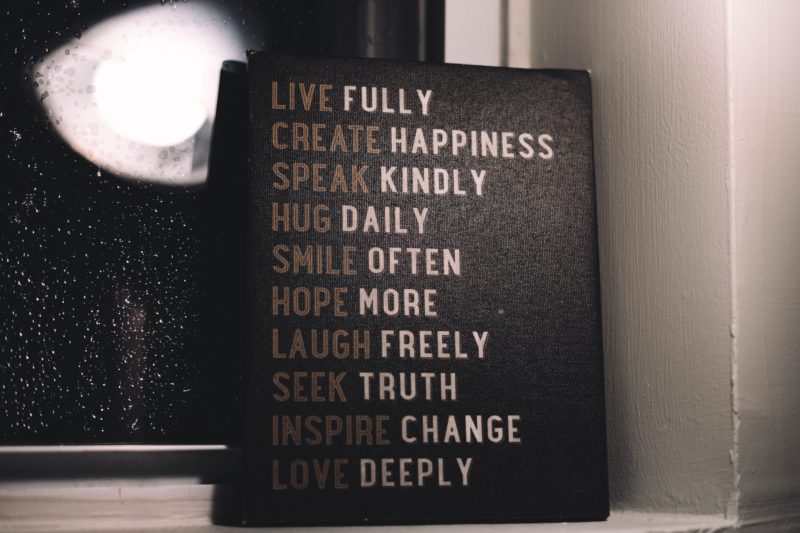Developing a new brand or refreshing an existing one is a big investment of time and resources. A brand defines who you are and why you matter. It helps create your identity, purpose, and most importantly, your WHY. Why do you exist? Why do you matter? What are you doing that causes someone to make a decision or feel a certain way? And what impact are you making with your audience, community, employees, or the world? Your WHY is not only what makes you stand apart from other brands, it’s what ultimately creates brand loyalty and brand ambassadorship.
Branding isn’t just about logos, colors, or graphics—it’s about understanding the wants and needs of your target audience and creating something that both resonates with them and ignites them to action. To do it right takes time and research.
Why Research Matters

In early 2020, Bloom’s leadership team began to discuss our branding and marketing strategy to determine how we could improve our messaging and visual presence to better reflect who we have become as a fast-growing, award-winning agency. As an organization that helps mission-driven brands grow through impactful storytelling, we realized that as we’ve evolved and grown ourselves, it was time for some sort of a refresh. Over the course of a year, we handcrafted a new voice and visual identity to usher in the next chapter of growth and expansion for us and the communities we serve.
We started this process with research—which is at the foundation of all we do—to better inform our decision-making process. We needed to better understand who we are, how we’re perceived, how we compare with our competitors, and how to differentiate ourselves.
Using a variety of research methodologies, such as interviews, surveys, polls, and focus groups—it’s important to consider both qualitative and quantitative methods to best understand your audience’s needs. In our case, we decided on both qualitative and quantitative research methods hoping to validate some pre-identified hypotheses, as well as surprise ourselves with unique findings we knew we’d learn along the way—helping us gain new insights and perspectives into our brand and audiences.
Embarking on the brand research, we began gathering both internal employee feedback, as well as past and current clients’ thoughts and perceptions about our brand. We asked current and past clients what they knew about our agency and services, why they chose to work with us, how they felt about our visual brand, what do they associate with our agency, and how would they describe Bloom. Similarly, we asked employees how they felt about our culture, mission, and values, how they would describe Bloom, how they felt about the words we used to tell our brand story, and whether it all aligned with who they thought we were and who we wanted to be.
As we gathered and listened to this feedback, we also began to analyze our brand through a social media audit and competitive analysis. We looked at what our audiences were responding to on our social platforms and website, what content was resonating, and how people were engaging. We reviewed data to validate whether our strategies were working. We brainstormed ideas, big and small, on ways we could better engage with and support our clients. We looked at everything. Then, taking a step further, we looked at those same things for our perceived competitors. This audit gave us a picture of what was working and why, what needed to be changed, and where there were opportunities for Bloom to think differently about our message and strategy.
The Power of Words

A brand’s voice matters, not only to help target audiences understand your brand value proposition, but also, your brand mission, vision, and values. Choosing the right words to tell your brand story (why you matter, and what you believe in) can make all the difference to your audience. If your audience feels connected or has similar values, they are more likely to choose your brand over a competitor.
Throughout our research, we heard words like “caring, friendly, genuine, mission-driven, inclusive, professional, and reliable”. Many of these words didn’t surprise us, as we keep a pretty tight pulse on how our clients and employees feel about our agency and our work. They also validated the growth path we envisioned for the agency—who we want to be, who we want to hire, and how we serve our clients.
However, some words we were using, such as “socially responsible”, were identified as words we should change. This helped us shift our messaging to create more inclusivity and better share our story and the services we provide. In the end, we were able to utilize some of our current messaging, while also changing and creating new messaging that better reflects our growth and passion.
Using Research to Inform Your Brand

The best part of using research to inform your brand strategy is getting a new perspective from your key audiences. As we listened throughout our research, we were able to see how our audiences were experiencing Bloom through their descriptions of our value, placing them at the center of our brand story.
We heard consistent themes about our messaging, visual presentation, and company culture that validated the direction we desired to move, confirming that a light refresh wasn’t what was needed—but rather a more comprehensive and refined look, feel, and messaging strategy.
The time we spent understanding the needs and wants of our audiences not only gave us better insight into how our brand was being perceived, but also confirmed the new brand direction.
Check out Part 2 of Developing the New Bloom Brand as we shed light on how we incorporated our research findings to inform our new visual brand identity.
Need help with your brand? Get in touch!
